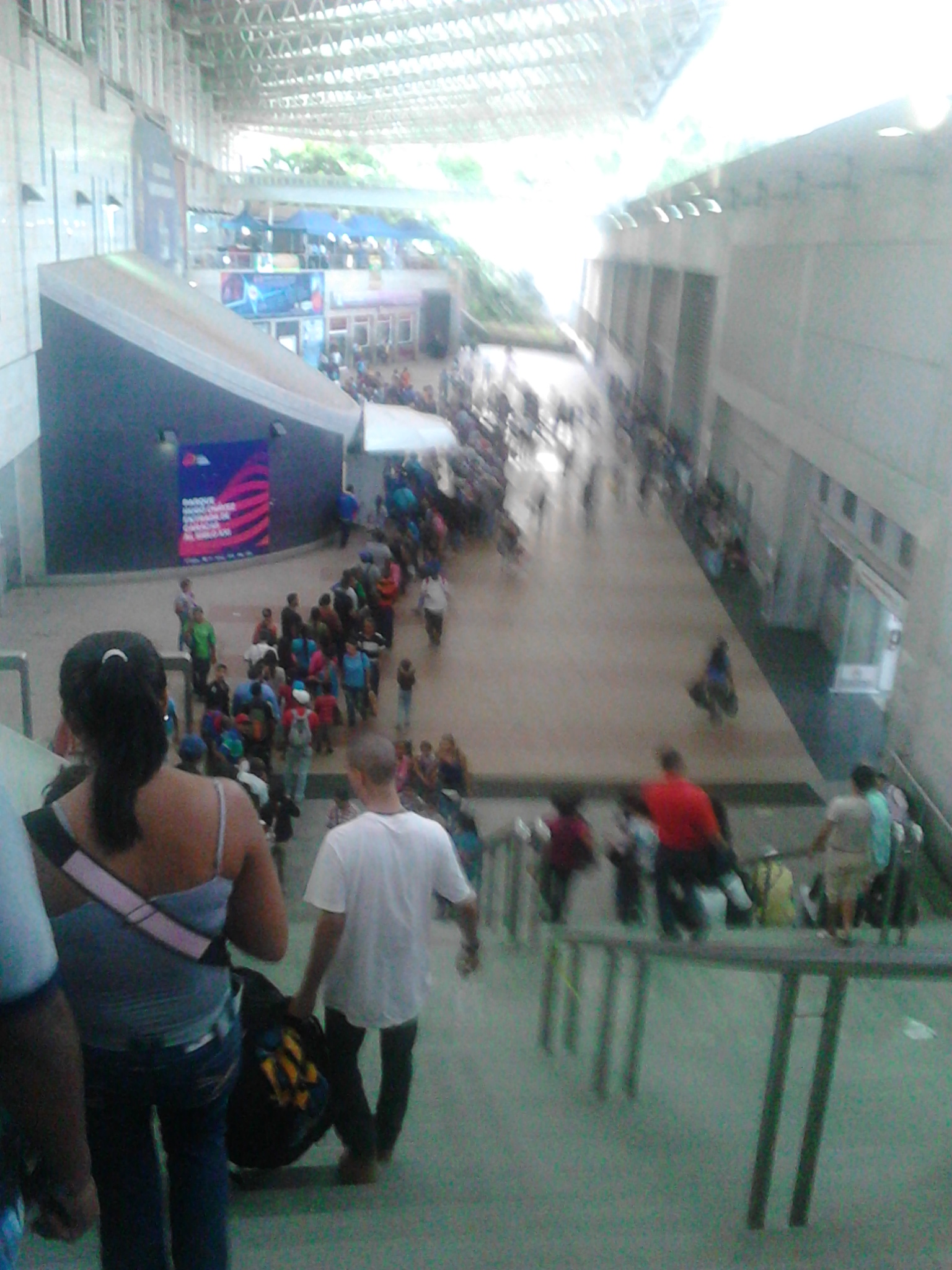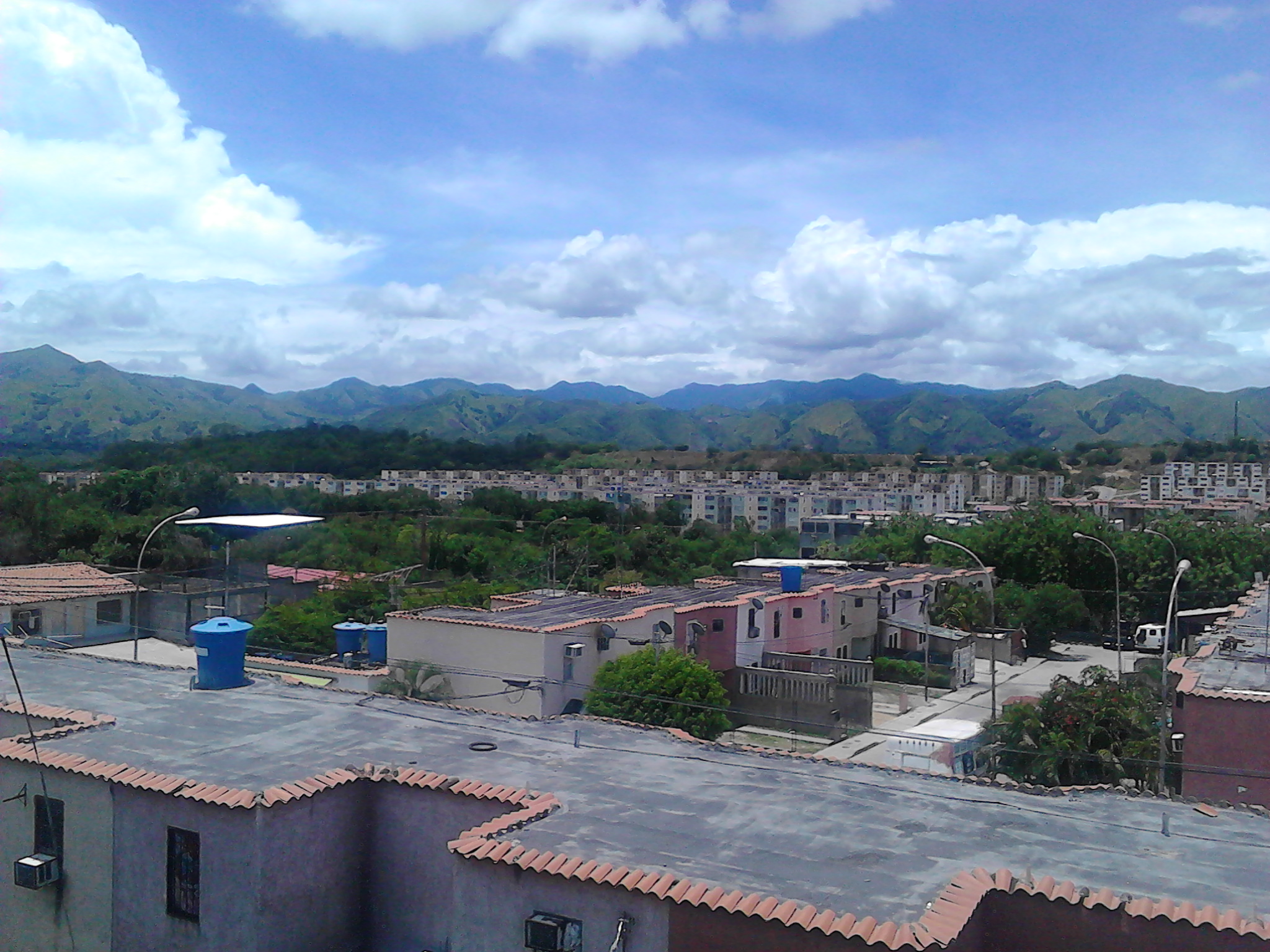There's something about Betania II
I went to visit my sister in Ciudad Betania, a sprawling complex of five GMVV housing projects just outside Ocumare del Tuy. They're pretty screwed up places. Well, four out of the five are. Then there's Betania II.


As the bus from downtown Ocumare to Betania housing developments stops at a gas station, a young man loudly yells when he notices the station is almost empty:
“Venezuela está jodida vale!”
A man in his late 50s overhears and quickly replies
“That’s not true, the only thing that has fucked the country are those escuálidos de mierda. There’s plenty of food RIGHT NOW, don’t you see!? Potatoes, tomatoes, pumpkin, even fresh sardines!”
I took a break from my job and I decided to visit my sister in Ocumare, Miranda state. Roughly 35 miles away from Caracas, it should be a 30-minute trip using the Metro and IFE (subway + commuter rail) systems.
This is what I was faced with when I got to La Rinconada rail station.

Funny what happens to lines when tickets are pretty much free.
Once I reached the end of that madness-made-line, I paid a trifle 4 Bs. for a plastic token I never received because the majority of them have been lost or stolen. I was given instead a piece of plastic. Then I proceeded to go down to take the railway which would go to Charallave Sur station.
Once there, I saw a swarm of people yelling and chanting sáquenlos! to a group on the other side of the platform. They’re not supposed to be on the other side at all: trains that arrive from Charallave and Cúa open their doors on that side first to let out passengers, then close them, and open them on this side. It turns out if you manage to get onto the arrivals side you comfortably get in the train without actually having to shove your way in like normal people. A little bit of viveza criolla, it enrages the people on the departures platform.
In the end, it took me almost three hours to get to my sister’s place.
 She lives in Ciudad Betania I, a housing complex built by Gran Misión Vivienda Venezuela in 2007, which now houses about 30,000 people. The usual fruit vendor greets us as we walk to her apartment. I notice that Betania has become a local entrepreneurship hotspot: people selling home-made ice cream, loose cigarettes and coffee from the comfort of their homes.
She lives in Ciudad Betania I, a housing complex built by Gran Misión Vivienda Venezuela in 2007, which now houses about 30,000 people. The usual fruit vendor greets us as we walk to her apartment. I notice that Betania has become a local entrepreneurship hotspot: people selling home-made ice cream, loose cigarettes and coffee from the comfort of their homes.
To make ends meet, my sister is helping little kids do their homework after school, private tutoring, basically. She tells me she doesn’t charge too much because sometimes parents can’t afford to buy food, let alone to pay for tutors. She’s charging Bs.400 a week per kid. That’s 40 U.S. cents.
People from Betania I have to go to downtown Ocumare, about 10 minutes by bus, if they want to get groceries. The only Dia-Dia Practimercado there gets fully crowded when products are announced. The whole 4 days I stayed, no products were brought. My sister tells me when something comes; a National Guard perimeter is promptly set up to “guard” the line. They’re there to take stuff ahead of anyone else, though in some cases people have already waited a couple hours to buy. Mocking their way in through the Dia-Dia doors and people, it’s safe to say they aren’t exactly beloved in the Betania community.
Betania I started as a promising neighborhood for displaced families. My sister and her family got there after her previous home in La Veraniega, in Ocumare del Tuy, which didn’t have a sewer system and was basically just a cesspool. She says Betania I was soon overwhelmed by petty crime and drug trafficking. People here are poor, and too many young ones just couldn’t resist the lure of easy money. The government continued to expand the neighborhood and through GMVV built Ciudad Betania II, III, IV and V.
Naturally, most of the problems spread to the newer complexes: crime, lawlessness, the general decay of a failed experiment. The exception, though, is Betania II. Betania II, I found out, is just a little bit different.
The old man is still going.
“You know what? If we have to eat dogs, then we will. I’m telling you una vaina, I once went to El Olímpico in the UCV, my wife bought two pinchos from a man in the stadium and we quickly chomped down on them. A couple days later we were told there was a report of missing dogs in the area. My wife was nauseated, but what the hell, she already ate that shit.”
The young man then shoots back: “Pero mi pana, what’s the point on criticizing imperialism when Russia and China own us? I remember when you could buy decent equipment for your house with Bs.5,000, I mean TV, DVD and music player. Now that’s chump change.”
“Pero carajito,” the old man again, “all that Polar sells us is poison! We need to come back to what our ancestors ate!”
It’s oddly quiet in Betania II. Though it’s just a five minute bus ride from Betania I, things feel different here. It’s weird, but things work like a charm here. Well, as long as you actually have the money and you know how to behave yourself, anyway.
On Betania II’s main street, you can find a shocking array of goods, all kinds of things that are just a fading memory in the Dia-Dia. But be prepared, a single Harina Pan can go up to Bs.2,000 and a 2-Kg bag of Ace detergent (Venezuela’s Tide) for a solid Bs.4,500. Definitely not suitable for all pockets. And yet, I saw a man in a 4×4 picking up eight packs of Harina Pan and paying cash. That’s 160 separate Bs.100 bills! Spaghetti, rice, deodorants, bread, toilet paper, diapers; is all here.
Remember I said you have to know how to behave? People in Betania II know each other. As I walked with my nephew, some of them sharply looked at me as if they were saying “we know you’re not from here”. I tried to be discrete with my phone as I took pictures to prevent unnecessary questions. My sister later told me Betania II has relatively few muggings and such. Why? Organized gangs LP make sure there are no public order “disruptors” and if someone dares to commit a crime, they swiftly get expelled along with their family. Depending on the gravity of the crime, there might be a corpse to deal with.
I start to get it. This community created its own code, a kind of tropical omertà, and people stick to it. Henrique Capriles Radonski only visits wealthy villas in the Ocumare community. Ppeople living in these housing complexes had to improvise some way to make it through these harsh economic and social conditions. They despise the president, they despise the governor. No creen en naiden.
An old woman in her 70s finally joins the short impasse between the men, “mijitos you have to eat rice, pumpkin, cassava; all that stuff that grows from the soil! Look at me! I’ve got many parcelas to grow my own food.”
At this point I also piped up, “What about people without soil to grow vegetables?” A woman sitting next to me whispered – “my daughter doesn’t even like potatoes or sardines. It’s so hard to get her to eat what I can find.”
The viejita goes on an all out rant – “We don’t need those niñitos leaving the country! And, ANYONE who gets to Miraflores is gonna swindle the money anyway! You’re stupid if you think they won’t! The escuálidos can drop dead for all I care!” A couple of minutes later and some people are laughing at the scene; she leaves the bus, triumphantly yelling “See you in the next chapter!”
Caracas Chronicles is 100% reader-supported.
We’ve been able to hang on for 22 years in one of the craziest media landscapes in the world. We’ve seen different media outlets in Venezuela (and abroad) closing shop, something we’re looking to avoid at all costs. Your collaboration goes a long way in helping us weather the storm.
Donate




